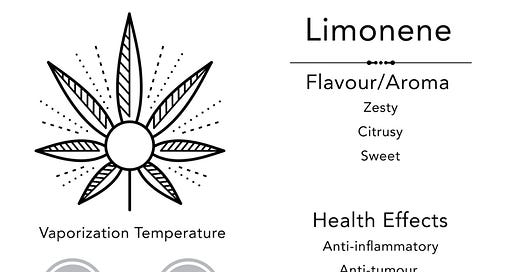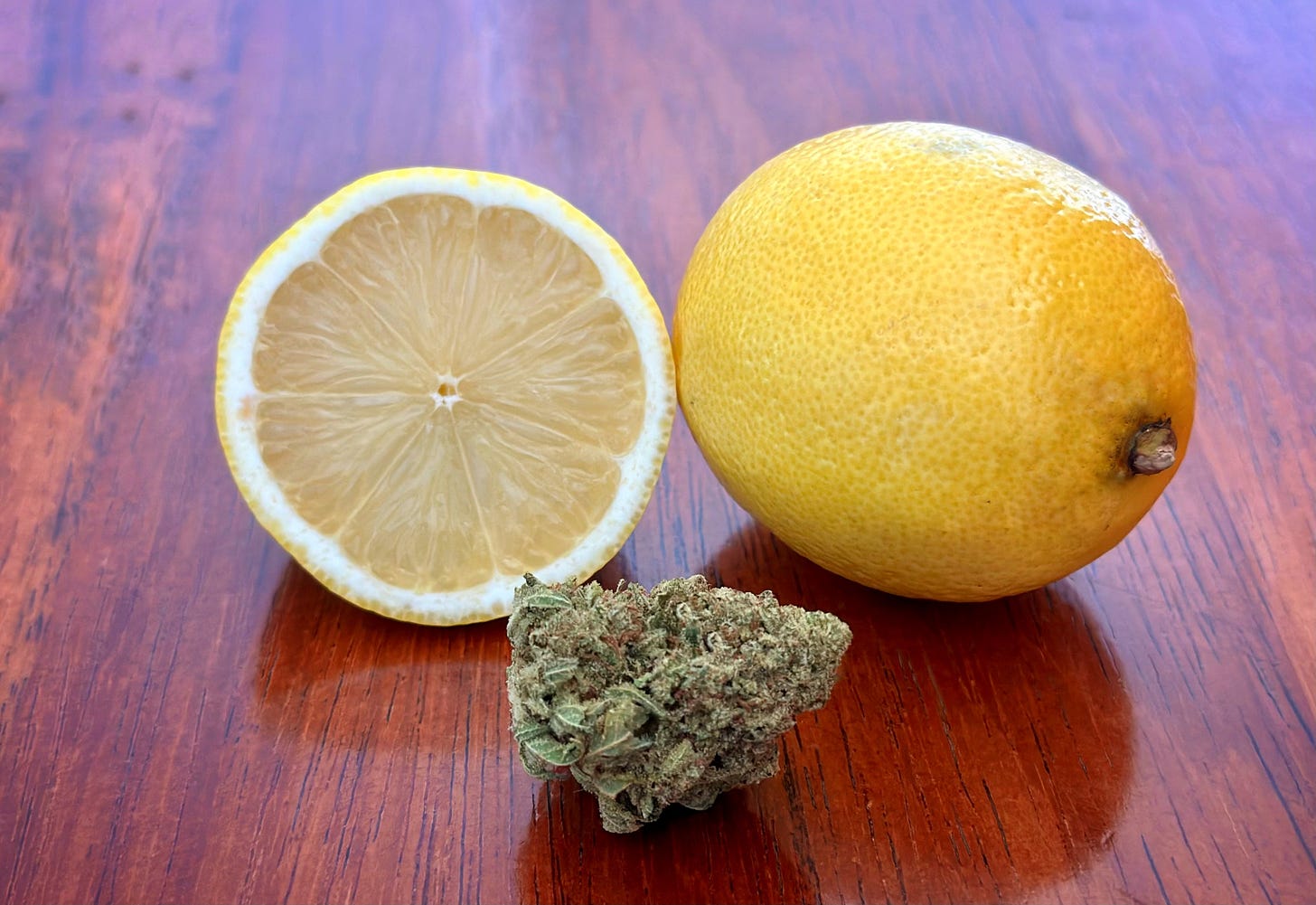This month we’re taking a closer look at one of the most abundant and closely examined terpenes found in medicinal cannabis… Limonene.
Limonene is a mono-terpene most commonly associated with citrus fruits such as lemons and limes and is responsible for their distinct aroma and taste. However, it can also be found in mint, juniper, rosemary, pine and fennel. Limonene is flammable as a liquid or vapour and toxic to aquatic life.
Egyptians used the essential oil from a tree called Elemi which is high in Limonene during the embalming process. Limonene became popular in Europe around the XVIth Century and was traditionally used to heal deep wounds and cuts and speed up the healing process of fractured bones.
A solvent of cholesterol, Limonene has been used in clinical settings to dissolve cholesterol-containing gallstones. In a study with mice Limonene reduced triglycerides, LDL (bad) cholesterol, fasting blood sugar, and fat accumulation in the liver, compared to a control group.
Limonene has been shown to reduce inflammatory markers that relate to osteoarthritis. It does so by reducing nitric oxide production, which is a signalling molecule that plays a role in inflammatory pathways.
In a population study, people who consumed citrus fruit peel, the major source of dietary limonene, had a reduced risk of developing skin cancer compared to those who only consumed citrus fruits or their juices. Additionally, research in rodents found that supplementing with limonene inhibited the growth of skin tumours by preventing inflammation and oxidative stress.
Because of its gastric acid-neutralising effect and its support of normal peristalsis, Limonene has also been used for the treatment of heartburn and gastroesophageal reflux (GERD).
Limonene is not psychoactive but has been shown to elevate one’s mood by decreasing stress and anxiety while increasing energy levels. A 2013 study in mice found that Limonene increased the availability of serotonin as well as reduced anxiety-related symptoms.
Limonene is one of my personal favourite terpenes and it’s easy to assume that a cultivar high in Limonene would smell like citrus but unfortunately, that isn’t always the case. This is a terpene you’re going to have to do your research on by checking your cultivar’s Certificate of Authenticity as Limonene occurs in trace amounts, generally less than 2%.
If you’re looking for medicinal cultivars on the Australian market that are high in Limonene… (Information comes from COA listed on honahlee.)
Alfie Therapeutics’s Mac-1 (Limonene 0.85%)
Alfie Therapeutic’s K. Mints (Limonene 0.79%)
Lyphe Australia’s Wildflower Grevillea T23 (Limonene 0.68%)
Alfie Therapeutic’s Coastal Kush (Limonene 0.62%)
Grandiosa’s Balance Dry Flower Kosher Kush (Limonene 0.60%)
Grandiosa’s Balance Dry Flower Blue Cheese (Limonene 0.60%)
Medibis’s Mapleton (Limonene 0.59%)
Beacon Medical’s Girl Scout Cookies (Limonene 0.57%)
Grandiosa’s Balance Dry Flower Jilly Bean (Limonene 0.51%)
Promethean BioPharma’s Sour OG Cheese (Limonene 0.49%)





